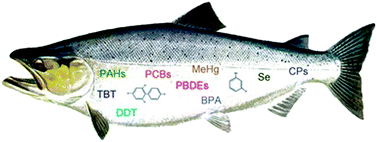The tissue-residue approach for toxicity assessment (TRA) is simply the use of tissue concentrations as the dose metric for characterizing toxicant potency. There are several advantages to using tissue residues over exposure concentrations (e.g., water, sediment, and diet) to calculate toxicity metrics. These include a large reduction in toxic response variability among all species for a given compound, an improved ability to address mixture toxicity, an increased use of information on modes and mechanisms of toxic action, a likely reduction in the number of species needed to characterize toxicant potency, the potential to improve ecological risk assessments, and the generation of more scientifically defensible tissue, water, and sediment toxicity guidelines or criteria. A keystone concept for the TRA is that the body/tissue residue reflects the target “dose” better than the traditional dose (e.g., water, air, soil/sediment, or diet) because the closer the dose surrogate is to the actual site of toxic action the less it is influenced by myriad modifying factors. Our goal for this review is to present the concepts and issues associated with the TRA and discuss some of the potential applications and expected improvements to the field of environmental toxicology that we believe will promote enhanced protection for species and ecosystems.

You have access to this article
 Please wait while we load your content...
Something went wrong. Try again?
Please wait while we load your content...
Something went wrong. Try again?


 Please wait while we load your content...
Please wait while we load your content...